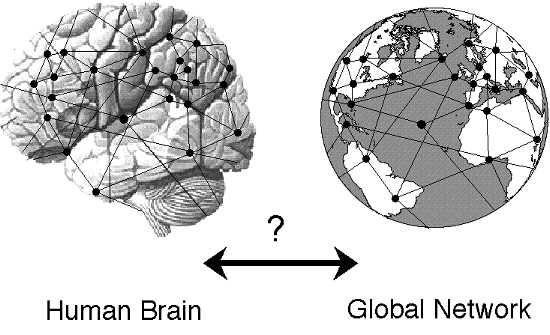2008/09/23
Assignment 1
The Black Box: Please start playing with the applet. Don't feel intimidated! It is supposed to make you feel as if you are looking into a World that you are supposed to model, but know nothing about. As a first approach, look and take notes to eventually use for a model. It is a black box, so you need to try to figure out what is inside. It will take considerable time and patience...


Labels: assignment
Data and Search Institute Studio Open House -- Wed, Sept 24
We are very excited about the upcoming Open House on Wed September 24th, from 3pm to 5pm. We'll be featuring information on the research pursued by members of the Center, and will be seeking to entice students to work with our stellar, cross-disciplinary faculty. We hope that you can attend, and we encourage you to invite any students you know who might be interested in pursuing new research opportunities.
We will have food and refreshments available!
We will have food and refreshments available!
Lecture slides for lecture 3 online
2008/09/22
High risk NIH grants
"The NIH Director's Pioneer and New Innovator Awards aim to fund high risk-high reward projects that tend to get passed over during the peer-review selection for NIH R01 grants." Full story @ The Scientist
2008/09/20
Tap Into the 12-Million-Teraflop Handheld Megacomputer
"The next stage in technological evolution is a single worldwide computer. Collectively, we are already assembling this megacomputer from our billions of Net-connected PCs, cell phones, PDAs, and the like. As an increasing number and variety of devices are lashed to one another via the Internet and other communication systems, they form the components of what we might call the One Machine". Full Story @ Wired: Infoporn
Labels: computing, global brain
Email Bots
2008/09/18
Geeks rap too!
2008/09/17
Proto-Life
"a lab led by Jack Szostak, a molecular biologist at Harvard Medical School, is building simple cell models that can almost be called life. Szostak's protocells are built from fatty molecules that can trap bits of nucleic acids that contain the source code for replication. Combined with a process that harnesses external energy from the sun or chemical reactions, they could form a self-replicating, evolving system that satisfies the conditions of life, but isn't anything like life on earth now, but might represent life as it began or could exist elsewhere in the universe." Full article @
Wired Science
Wired Science
2008/09/16
Fault in Effort to Decode Human Genome to Fight Disease
"David B. Goldstein, a leading young population geneticist, says the effort to nail down the genetics of most common diseases is not working." Full story @ NYTimes.com - Science


2008/09/11
Slides for Lecture 2 online
Lecture 2 - Cybernetics
Some links with materials used in class:
John W. Mauchly and the Development of the ENIAC Computer
Computer Architecture by Tim Margush

Some links with materials used in class:
John W. Mauchly and the Development of the ENIAC Computer
Computer Architecture by Tim Margush

John Von Neumann
Labels: Alan Turing, computing, cybernetics, John Von Neumann, Norbert Wiener, Warren McColluch
2008/09/05
Aware of All Statistical Traditions
Cosma Shalizi's response to Chris Anderson's Wired article about how massive data availability is making theory and the scientific method obsolete, is truly worth reading in detail---following all the links.
Labels: computing, informatics, statistics
Slides for Lecture 1 online
Lecture 1 - How did we get here?
I also recommend reading the following paper by Prof. Eden Medina, related to her wonderful presentation to the class:
Medina, E. [2006] "Designing Freedom, Regulating a Nation: Socialist Cybernetics in Allende's Chile.", Journal of Latin American Studies. 38, 571-606 .

I also recommend reading the following paper by Prof. Eden Medina, related to her wonderful presentation to the class:
Medina, E. [2006] "Designing Freedom, Regulating a Nation: Socialist Cybernetics in Allende's Chile.", Journal of Latin American Studies. 38, 571-606 .

Participants of the Tenth Conference on Cybernetics, April 22-24, 1953, Princeton, N.J. from "Interview with Heinz von Foerster"
Labels: chile, cybernetics, informatics, Macy Conferences
2008/09/03
History of Cybernetics
Dark Hero of the Information Age
"[...]there's another kind of scientist who never breaks through, usually because while his discovery is revolutionary it's also maddeningly hard to summarize in a simple sentence or two. He never produces a catchy hit single. He's more like a back-room influencer: his work inspires dozens of other innovators who absorb the idea, produce more easily comprehensible innovations and become more famous than their mentor could have dreamed. Find an influencer, and you'll find a deeply bitter man. Norbert Wiener -- the inventor of ''cybernetics'' -- is precisely this type of scientist." Full article @
The New York Times > Books > Sunday Book Review > 'Dark Hero of the Information Age': The Original Computer Geek

The New York Times > Books > Sunday Book Review > 'Dark Hero of the Information Age': The Original Computer Geek

Labels: cybernetics, informatics, information age, Norbert Wiener





